Ferns belong to the oldest group of plants that existed long before the appearance of flowering vegetation and are still preserved. Today, fern is one of the most popular plants for landscaping. In this topic, we consider the reproduction of ferns at home, as well as their varieties and development.
Material Content:
Types and varieties of ferns
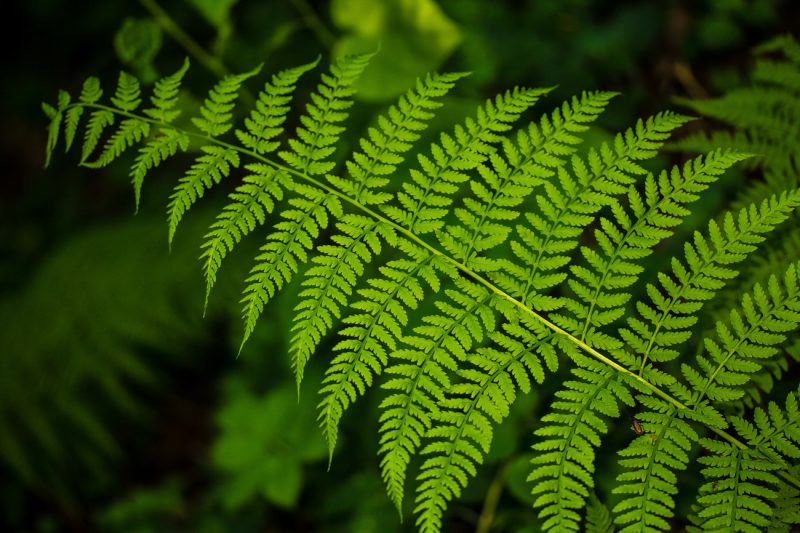
There are a huge number of groups and varieties of fern.
Asplenium.

Known for his love of rocky surfaces. Forms a separate family. The description is as follows: rounded, leathery leaf blades on thin branches. The most famous are two species: walled and northern. The first is often found on the walls of old stone buildings. It grows mainly in stone crevices. Northern loves the rocky places of northern Europe and Asia.
Woodsia.

Belongs to the Asplenia family. Low-growing fern, characterized by "fluffy" foliage - thin leaves grow from a small root, from which smaller leaves diverge in two directions. It has several varieties (Elbe, multi-row), which differ in the size and density of leaves.
Kochezhdizhnik.

Also belongs to the Asplenium family. This variety has about 200 varieties. Of these, the most famous are female, Chinese-reddish (with red veins). Description: tall shrub with delicate, light leafy feathers.
Mnogoryadnik.
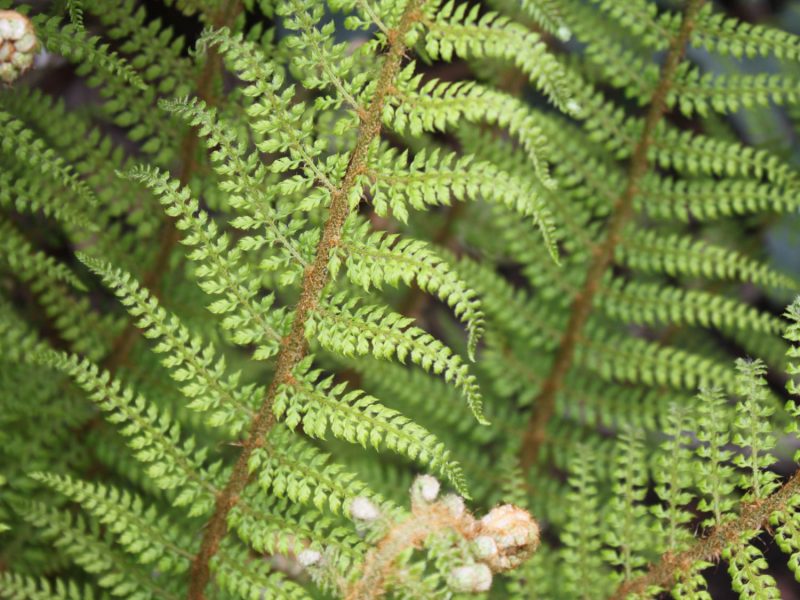
Like previous groups, it is part of the Asplenium family. It differs from the previous ones in the width of leaf branches, in love for the dense shade of the wooded area. Such varieties are known: Brown mnogoryadnik, tripartite, bristle.
It is interesting:indoor fern
Orlyak.
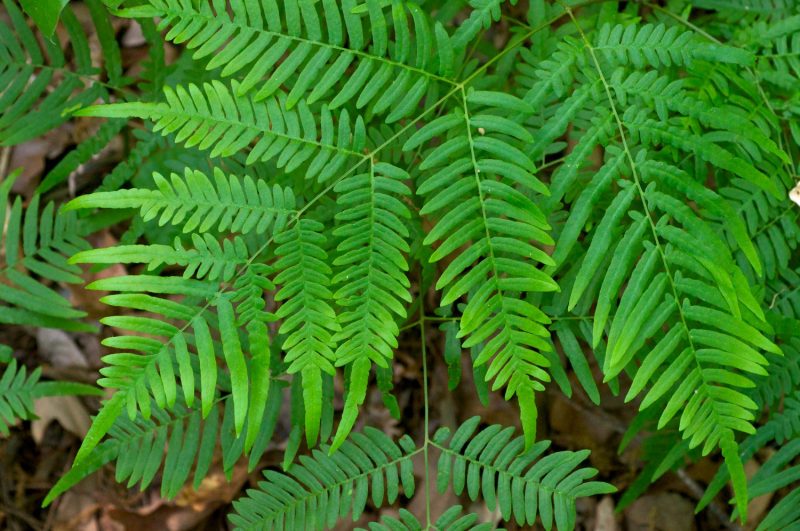
Belongs to the family of caterpillars. It is popular for its unpretentiousness - varieties of this group are found on all continents of our planet: tundra, wasteland, wooded thickets. He is not there except in the desert and steppes. It differs from other varieties in the huge size of leaf branches - up to one and a half meters.
Osmund.

Forms his own family. One of the most ancient fern species. In ancient times, they grew on all continents, but today they are found only in the Caucasus, in the forests of East Asia and North America. Varieties are known for the following: Asian, Clayton, Royal. Likes a small shadow and marshland.
Skrabnitsa.
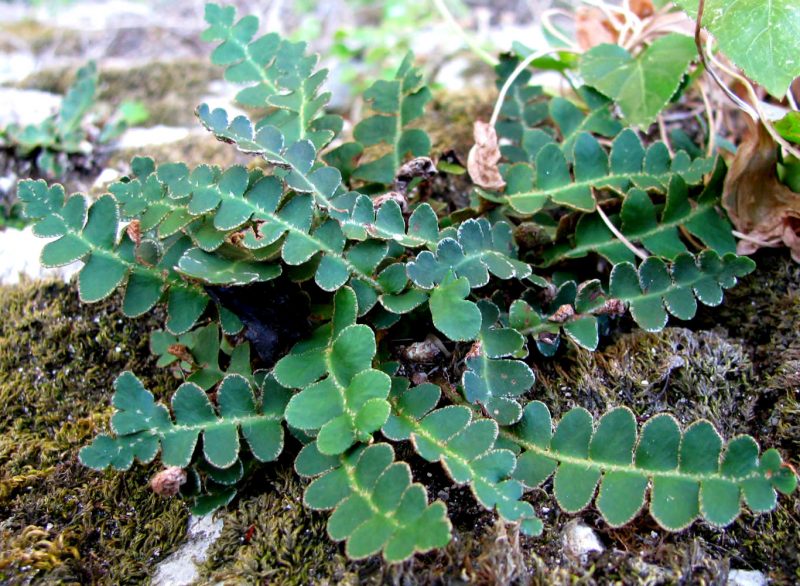
Belongs to the asplenial family. Its distinctive feature is its unique love of land and a lot of light in its family. The leaves are leathery, dense, in contrast to relatives. Prefers limestone cliffs.
Common varieties of fern include Ostrich (the shape of the leaves resembles ostrich feathers), Teliperis (different lush fluffy greens), Fegopteris, Shchitovnik, Onkoleya.
Fact. It was ferns many thousands of years ago that had a kind of woody plant variety. The trees died out over time, and their wood went deep into the soil, pressed and survived to our days in the form of coal.
The structure and development of ferns
The main phase of the life cycle is the sporophyte.
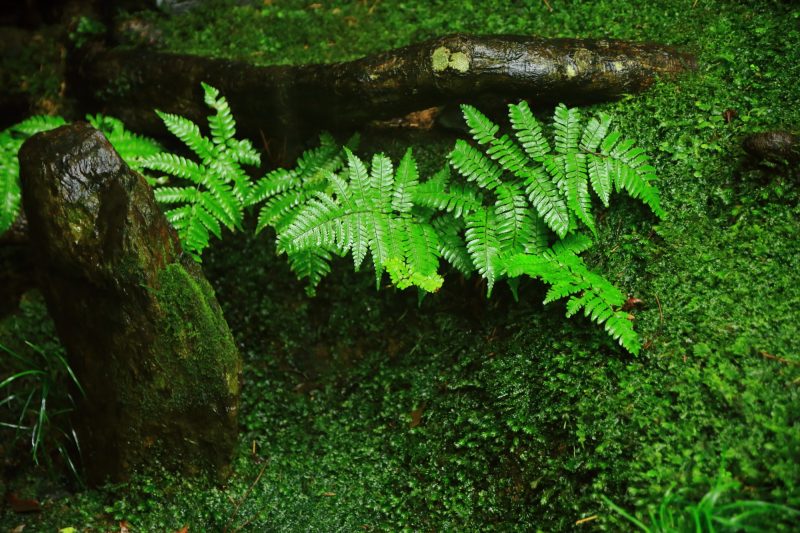
Features of the structure of sporophyte:
- not long roots extending from the main oblong rhizome. The primary root quickly dies, and small roots grow stronger, kidneys form on them;
- shoots - formed from buds on the roots, are the main way of fern propagation;
- leaves - grow from the root;
- sporangia collected in small bunches with the name “soruses” - small green platelets with spores - the second way to propagate ferns.
Life cycles:
- Asexual plant. A full fern seed producing bush.
- Disputes. Seeds from the box that fell into the soil.
- Growth. A small green plant attached to the soil, producing immediately male and female cells.
- Gametes. Stage of reproduction, fusion of heterosexual cells.
- The embryo. The formation of a new asexual plant.
On a note. It is not customary to call the green mass of fern leaves, since in structure it is completely different from the usual foliage of flowering shrub plants.
Scheme and description of plant propagation
Fern propagation occurs with the help of seeds.
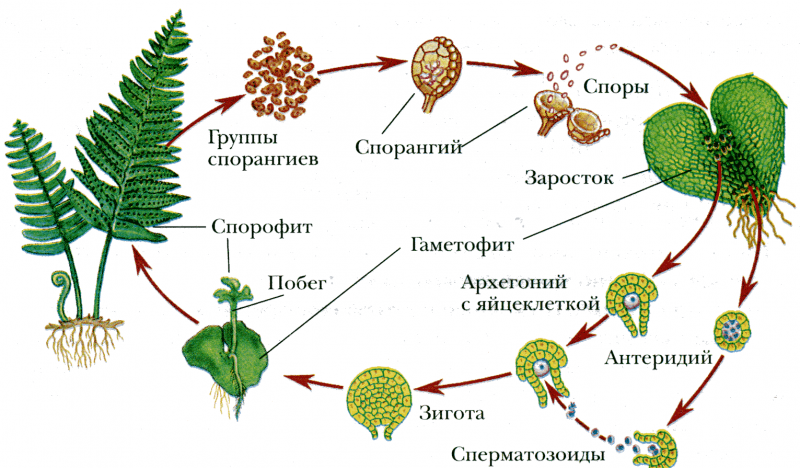
The fern propagation pattern is as follows: on the underside of the fern leaf there are soruses which, when ripe, separate from the leaf plate. Sporangia in the ring of sorus are torn, scattering fern spores around them. Then a small green plate grows out of the spore and grows into the soil. This growth is attached to the soil by rhizomes, has male and female plant organs. As soon as water gets onto the plate, for example, after rain, fertilization occurs: in the female organs (archegonia) there is an egg, to which sperm cells move dropwise from the male organs (anteridia), and fertilize it. It turns out a full-fledged embryo attached to the growth, from which it feeds during development. Further, over time, the plant grows.
Sexual reproduction and its features
For home-grown reproduction of fern at home, it is necessary to collect spores that have been released from the shell and sow in the right place. This area should be well moistened. The condition for the successful conception of a new plant is a high level of humidity.

For cultivation, it is recommended to use a mixture of peat, sterilized soil and charcoal in a ratio of 8: 2: 1, respectively. The resulting mixture is filled into a small pot almost to the top, then it is thoroughly tamped, sprinkled with brick crumb. Stones are scattered in this crumb.The pot is covered tightly with clear glass. The entire structure is placed in a pan with standing water. The temperature of cultivation is 21 degrees. The place should be darkened.
The first sprouts appear in a month, in two more - the fertilized small ferns let out the first leaves.
Vegetative propagation of a plant
Vegetative propagation is one of the methods of propagation of fern by division, used by gardeners. In nature, this method cannot occur, and it is not suitable for all species of ferns.
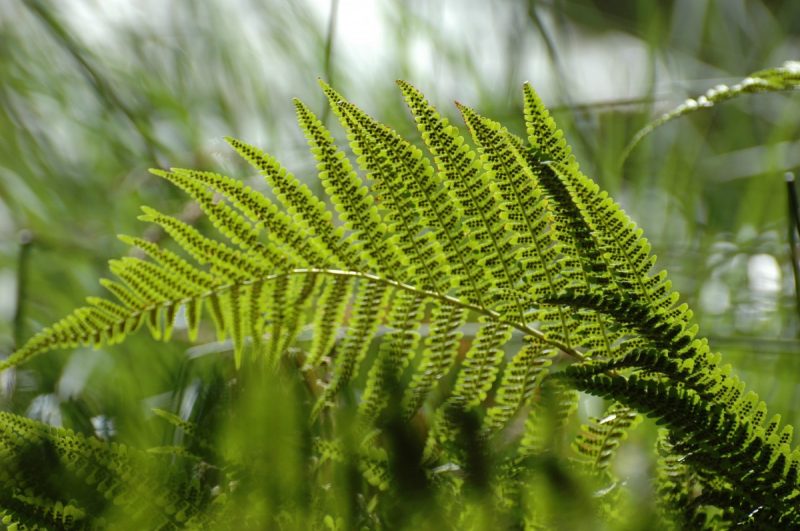
Important! To divide the bush, it is necessary to observe the condition - on one rhizome there should be several outlets. Then they are divided into several bushes.
The division dates are August and September, when the weather has already become cool, or in the spring, before the disclosure of the leaf vaya. The plant must be dug up and gently cut with a knife the rhizome between the outlets, then planted in new places and watered abundantly for some time.
Breeding cycle
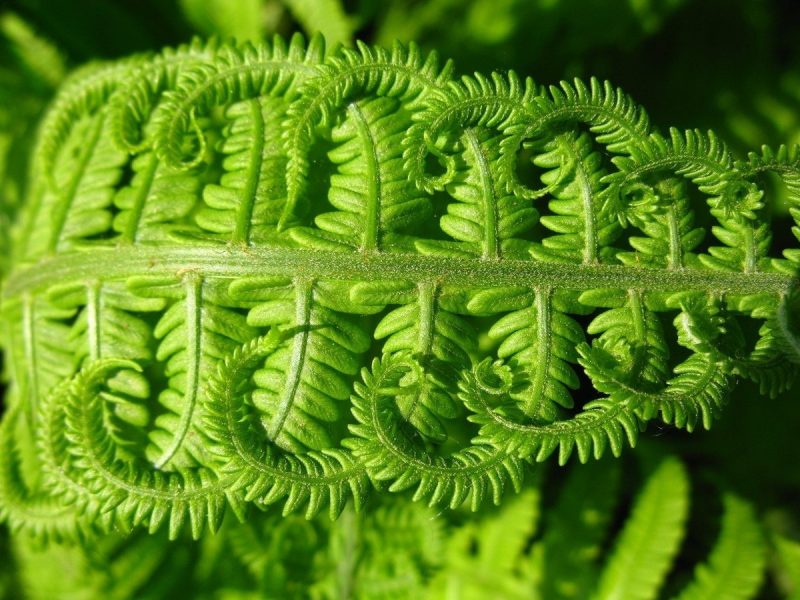
The breeding cycle is divided into two eras:
- Asexual generation. The reference point is the zygote from which the young sporophyte grows. Further, it develops into a full-fledged adult plant, on the leaves of which sporangia are formed.
- The sexual generation. It occurs at the time of disclosure of sporangia and spores getting into the ground. Mature spores germinate in small "legs" into the soil, formed into a mature gametophyte. At this stage, the female and male cells are ready for fusion. Then, under convenient conditions, they merge, and the cycle goes back to the stage of asexual generation.
Fern is a fairly common plant in the design of the garden plot. It is not necessary to buy it in a store - you can dig it in the wooded thickets. The main thing: bushes should be taken on a site where ferns multiplied well, that is, they formed extensive thickets. The petioles should have at least one rosette, a kidney, a more or less developed root system, so that the plant can adapt in a new place. The landing site should be moist, without direct sunlight.












